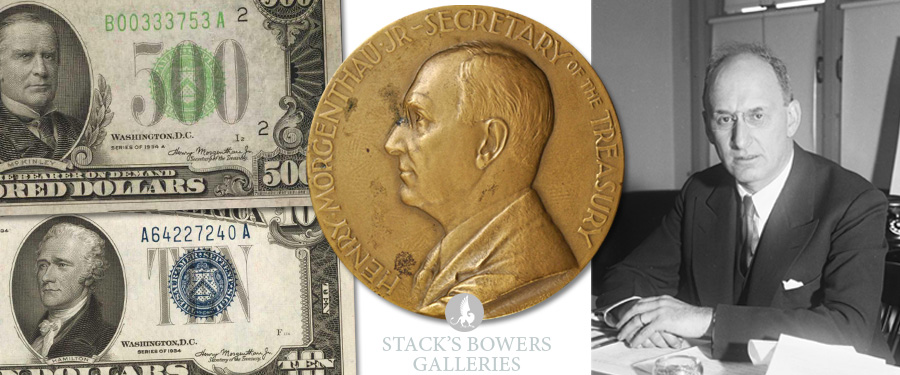
Henry Morgenthau, Jr. became secretary of the Treasury 90 years ago this week, on January 1, 1934. His tenure was very consequential from both a numismatic and historical perspective.
Morgenthau, Jr. was the son of a lawyer and real estate investor who later served as ambassador to the Ottoman Empire. He studied architecture and agriculture, operated a farm in upstate New York and wrote about scientific agriculture before being appointed in 1929 by then-Governor Franklin Roosevelt to be chair of the New York State Agricultural Advisory Commission and Conservation Commission. His close relationship with Roosevelt culminated in his appointment as Secretary of the Treasury after William Woodin, a noted numismatist, retired in failing health.
Secretary Morgenthau oversaw the Treasury through the tumult of the Great Depression and Second World War, putting aside his documented budget-balancing fiscal conservatism to implement many New Deal programs and to fund the Allied war effort. His signature, like that of previous secretaries, appeared on U.S. paper money – Silver Certificates and Federal Reserve Notes – during his long service. He issued the Roosevelt Administration’s order for citizens to turn in gold to stabilize the country’s specie reserves. His likeness appeared on a medal commemorating his 1934 ascension to the Treasury Secretary position and the 1939 Assay Commission Medal; the medals share an obverse design, signed by John Sinnock, chief engraver of the U.S. Mint from 1925 to 1947, and dated 1938.
Readers interested in other elements of Morgenthau’s public service should check out these resources:
https://www.pbs.org/wgbh/americanexperience/features/holocaust-morgenthau/
https://exhibitions.ushmm.org/americans-and-the-holocaust/personal-story/henry-morgenthau-jr
https://home.treasury.gov/about/history/prior-secretaries/henry-morgenthau-jr-1934-1945
https://www.federalreservehistory.org/people/henry-morgenthau-jr





